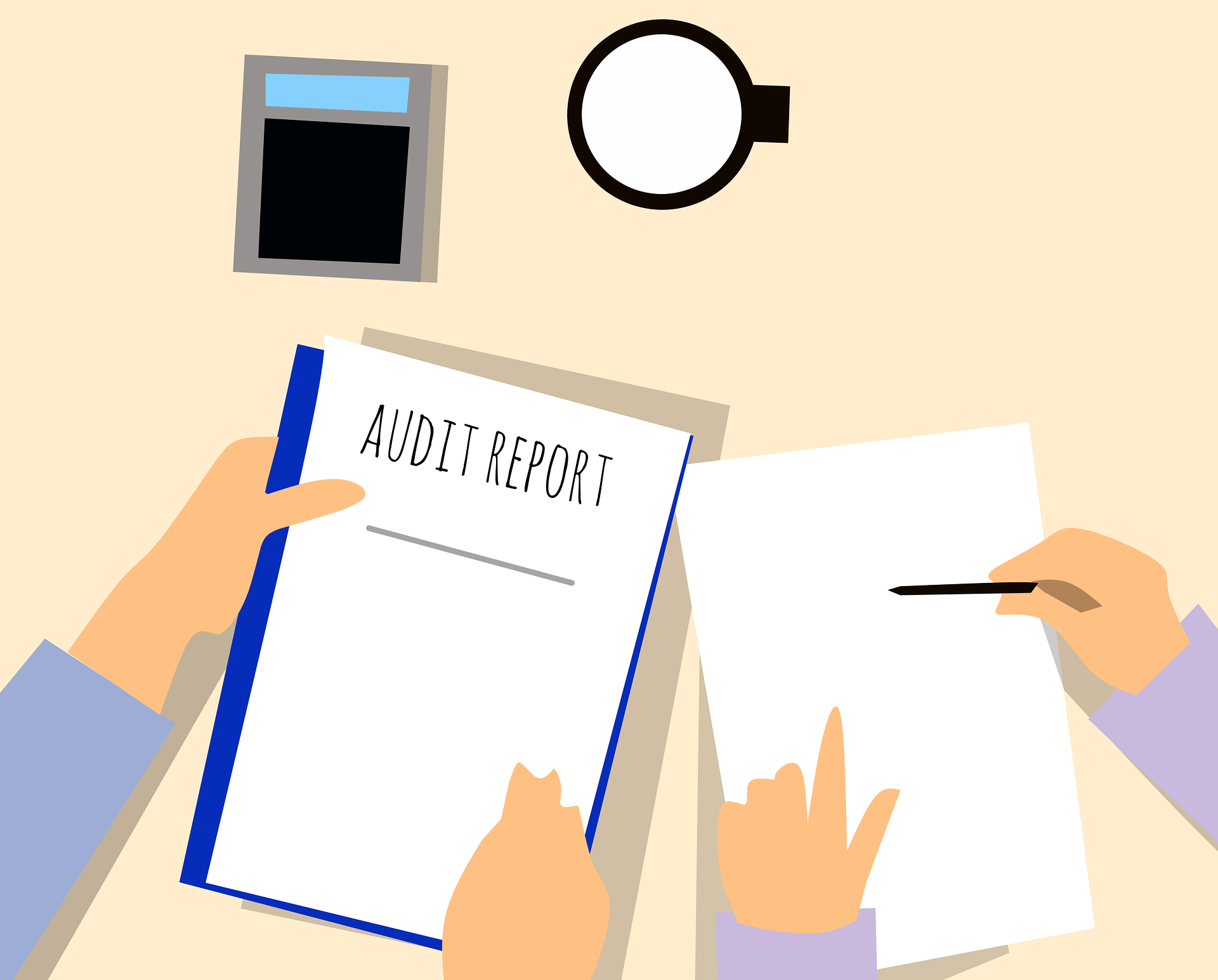The Benefits of Product Diversification

A Strategic Advantage for Producers
Cannabis producers are continually seeking ways to stay competitive and expand market share. One strategy for achieving these objectives is through diversification, which can include edibles, extracts, topicals, and even non-psychoactive CBD products. Diversification not only mitigates many of the risks associated with market volatility but also presents opportunities for innovation, efficiency and sustainability.
Risk Mitigation: The market for cannabis is subject to external pressures such as regulatory changes, shifts in consumer preferences, and economic fluctuations. By developing a range of products, manufacturers can buffer against these uncertainties. If one product line faces a downturn due to new regulations or market saturation, having a portfolio of alternative products can help maintain revenue streams.
Market Expansion: Diversification lets cannabis producers tap into different market segments to increase their chances of capturing market share in an expanding and competitive landscape. The cannabis market is no longer limited to flower smokers; consumers now seek items tailored to their preferences, such as edibles, tinctures, topicals, concentrates, and even beverages or health-focused CBD products. Each product range appeals to different demographics, from those who prefer discreet consumption methods to those interested in recreational or medicinal benefits. By offering a broad spectrum of products, producers can attract a wider consumer base, including those who might not typically engage with traditional cannabis products.
Innovation & Brand Loyalty: By innovating, producers can set trends rather than follow them, creating unique offerings that can become synonymous with their brand. This not only helps capture market attention but can also build strong brand loyalty. Consumers are more likely to remain loyal to a brand that consistently offers new, exciting, and effective products. Customers who have a good experience with a flower product may gain the confidence to explore edibles, tinctures, or wellness items from the same producer. Offering a wide variety of high-quality products enables cannabis producers to build stronger relationships with consumers. Moreover, diversifying helps a brand stand out from competitors, positioning it as a one-stop shop. Building an extended portfolio reinforces brand reputation and credibility in a market where consumer trust is essential.
Efficiency & Sustainability: Diversifying product lines can lead to better utilization of resources and contribute to environmental sustainability. Different products might use different parts of the operation, ensuring that waste is minimized, and all plant materials are used more efficiently. This can lead to economies of scale, potentially lowering the cost per unit and reducing the environmental footprint, which can appeal to environmentally conscious consumers.
Compliance with Evolving Regulations: The cannabis regulatory landscape is continuously changing, with regional laws specifying what types of products can be sold. By diversifying, producers are better positioned to adapt to regulatory changes. If one jurisdiction bans smoking, a producer with a line of edibles or topicals can still serve that market, maintaining presence and revenue.
Conclusion
Diversification offers a way to manage risk, expand market reach, foster innovation, optimize resources, comply with regulations, and contribute to sustainability. For cannabis producers looking to thrive, diversifying can be the answer. By expanding portfolios, producers can reach new customers, reduce financial risks, stay ahead of trends, and increase profitability. As the industry continues to mature, those who embrace product diversification will likely lead the market, setting standards and capturing the diverse needs of consumers worldwide.
AirMed has been 100 percent Canadian owned and operated since it was created in 2014. Click the Request Demo button at the top of the page today to explore AirMed in a free walkthrough and learn what home-grown can do for you.
Watch for an upcoming post on how AirMed handles a range of cannabis products and classes. In the meantime, visit our Software page.
10 Ways to Increase Cannabis Profits in 2025

High taxes, market saturation, and increased competition are cutting into profit margins for cannabis producers in Canada. In some areas, oversupply has driven prices down, affecting profitability for both growers and retailers.
With so many challenges complicating efforts for legitimate businesses to thrive, what can cannabis producers do to increase profits? We’ve compiled 10 strategies to help you cultivate success in the upcoming new year.
1. Diversify Product Selection: Broadening your offerings to include edibles, topicals, oils, and tinctures can create a wider customer base.
2. Target Niche Markets: Focusing on specific demographics or consumer needs, such as organic or medical cannabis, can establish a unique selling proposition.
3. Expand Distribution Channels: Export markets can offer new channels for Canadian cannabis, but be aware that meeting compliance in other regions can be costly. There are, however, alternatives. Selling to GMP-compliant organizations is one. Another is boosting your reach in Canada by partnering with retailers or large distributors and by selling online through direct delivery programmes.
4. Educate Consumers: Providing educational materials about product benefits and applications can strengthen customer engagement and drive sales.
5. Enhance Quality Control: Establishing high-quality cultivation practices can lead to superior products allowing for premium pricing and inspiring customer loyalty.
6. Optimize Processes: Creating formulas for cultivation or manufacturing by developing repeatable plans, templates, and recipes can ensure success again and again and trim waste.
7. Operate Efficiently: Streamlining through automation, standard operating procedures and improved resource management can reduce costs and increase output.
8. Minimize Risks: Active prevention through workforce management, approval workflows, and incident tracking lowers expenditures resulting from errors and damages.
9. Systemize Compliance: Having a system in place to administer compliance and stay ahead of regulatory changes can protect profits.
10. Improve Decision Making: Utilizing business intelligence and data analytics to track operations and consumer trends can help you make better decisions toward future success.
By implementing these strategies, cannabis producers can position themselves for greater financial success in a competitive market.
For information on the many ways AirMed can help you improve profitability, click the Request Demo button at the top of the page and a team member will be in touch. In the meantime, visit our Software page.
Cannabis & GMP/GACP: Part 7 - Options

Welcome to our summer series on cannabis and GMP/GACP. A new article will be published once a week throughout the summer. You can access related articles that have been published so far by clicking the Compliance category on the main News & Events index page: Compliance category
As mentioned in earlier posts, any software used for Good Manufacturing Practice-related activities must be validated in the facility at the time of certification. Even if a software system has been validated in another facility in the past, it will need to be validated in your facility if you are becoming Good Manufacturing Practice-certified.
But it isn’t just the cannabis management system that will need to be validated. Any software used in relation to compliance-related activities or data must be validated at the time of GMP certification.
In addition, every piece of equipment must also be validated for GMP. Since most equipment today relies heavily on software for its operation, all of that software will need to validated along with the equipment.
The process is not only time-consuming but extremely costly. Some organizations have reported spending up to two years with costs into six figures on the GMP certification process.
Is there another option? Yes.
If Canadian LPs wish to sell cannabis in Europe or other GMP regions, there are two options.
a) Become Good Manufacturing Practice certified OR
b) Become Good Agricultural & Collection Practice certified and sell product in bulk to a producer who is GMP certified
There are pros and cons to both of these options.
While GMP certification lets producers sell their products directly to regions where it is required, as noted, the certification process involves validating every piece of equipment and software used in the facility. Plus, the cost for GMP certification is dependent on what products the licensed producer sells.
There is also a significant cost to maintaining a GMP certification including performing third-party vendor validations every two to three years as well as re-validating equipment and software when new releases/firmware updates are installed. These re-validation efforts require regression testing to perform complete process re-validation for all areas related to the specific equipment or software.
GACP certification does not permit producers to sell directly in GMP regions but does allow them to sell to GMP-certified producers. These certified producers can be in Canada or in the destination region.
Since GACP does not require third-party vendor validation nor equipment and software validation, time and costs to achieve certification are significantly reduced.
Whichever route you choose to take, if you use a cannabis management system in your facility, you should ensure that the software offers as many compliance-related features as possible.
If a software vendor claims their system is GMP-certified, it is not true. No software can become GMP-certified. A system can be validated in the GMP-certification process for a specific facility, but there is no GMP certification for software nor for equipment.
A software system having been validated in another facility that achieved GMP certification is an indication that it may meet compliance in your facility. But that is not a guarantee. If you are using software incorrectly or inconsistently, validation may fail.
And remember that all quality systems are heavily dependent on physical processes and practices. Software only supports the operation and supplies the recordkeeping and auditing. No software can make your facility GMP-compliant on its own.
Links
Following are links to the various standards that could be applied to cannabis.
Good Agricultural & Collection Practices/GACP (also called GAP): International; Israel
https://www.who.int/publications/i/item/9241546271
https://www.gov.il/en/departments/topics/medical-cannabis/govil-landing-page
Good Production Practices GPP: Canada
Good Manufacturing Practices/GMP: International; European Union; Australia
Current Good Production Practices/cGMP: USA
Good Distribution Practices/GDP: United Kingdom
https://www.gov.uk/guidance/good-manufacturing-practice-and-good-distribution-practice
Cannabis & GMP/GACP: Part 6 - Software Validation

Welcome to our summer series on cannabis and GMP/GACP. A new article will be published once a week throughout the summer. You can access related articles that have been published so far by clicking the Compliance category on the main News & Events index page: Compliance category
Validated Software vs GMP-ready Software
As noted, there is no certification for software. Software can only be validated.
For facilities seeking GMP certification, there are two types of software validation: system validation and process validation.
System validation involves a review of the software against the criteria for computerized systems in the quality system. The vendor must be qualified, along with their internal processes, to ensure that the software has been developed in a way that meets good practices for privacy, security, data integrity and more.
Process validation involves running tests of critical operations to ensure that the software performs as specified and that the results meet the guidelines.
These validations happen during the facility certification process.
Most computerized system vendors offer validation support to help their clients through the certification process. This support may include test scripts and documentation.
But be aware that just because software has been validated does not mean that it covers all GMP requirements. In fact, software that has been validated could have only one GMP-related feature, but that one feature was reviewed during the certification of a facility.
What validation does is ensure that the software meets the criteria for computerized systems and that any features that manage GMP-related processes are compliant.
Also be aware that any vendor can claim that their software is GMP-ready, whether it has been validated or not. GMP-readiness implies that the software meets the criteria for computerized systems and that features in the software are compliant. But only on-site validation against the facility’s processes will determine if it meets compliance for certification.
And GMP-readiness, or even validation, is not an indication of how many GMP-related features one software has in comparison with another. Also know that GMP certification of a cannabis facility is not dependent on the software in use being pre-validated or claiming GMP-readiness. The proof is in the review of the software in relation to the processes in the facility.
Essentially, one software application should not be assumed better for GMP than any other software based on a claim of being GMP-ready or validated. The proof is in the functionality that each software system has in relation to GMP. And if a software vendor claims their system is GMP-certified or GACP-certified, know that this is untrue. Software cannot be certified, neither can any piece of equipment. Only a facility can be certified.
Validation Process
During GMP certification, all software applications that have GMP implications will need to be validated during certification.
The vendor will be scrutinized to ensure that they are a legitimate business and that they follow accepted practices in their software development. This typically requires a review of business licensing and standard operating procedures.
The software will also be tested against specific workflows to ensure that it functions as designed and as required to meet compliance. This typically involves utilizing product instructions and test scripts.
In the certification process, only GMP-related activities are validated. Activities outside the scope of GMP are not validated. For example, since growing and harvesting are not covered by GMP, the facility would not validate those during the certification process. An LP selling dried cannabis would start the validation process at the drying stage and move on through testing, packaging, labelling, and distribution.
Plus, activities outside the scope of the facility are also not validated. If a facility is not manufacturing edibles, the GMP section that covers that type of product would not be included in the certification process.
Each certification process is unique to the facility and to the products being manufactured.
Links
Following are links to the various standards that could be applied to cannabis.
Good Agricultural & Collection Practices/GACP (also called GAP): International; Israel
https://www.who.int/publications/i/item/9241546271
https://www.gov.il/en/departments/topics/medical-cannabis/govil-landing-page
Good Production Practices GPP: Canada
Good Manufacturing Practices/GMP: International; European Union; Australia
Current Good Production Practices/cGMP: USA
Good Distribution Practices/GDP: United Kingdom
https://www.gov.uk/guidance/good-manufacturing-practice-and-good-distribution-practice
Cannabis & GMP/GACP: Part 5 - Cannabis Management Systems

Welcome to our summer series on cannabis and GMP/GACP. A new article will be published once a week throughout the summer. You can access related articles that have been published so far by clicking the Compliance category on the main News & Events index page: Compliance category
CMS Functionality
In terms of government regulations and industry standards, cannabis management software is an electronic records management system. Most business management software programs are essentially electronic records management systems regardless of what industry they are use in.
Since a computer record is only as secure as the system that holds it, the organization must therefore make certain that both the hardware and software comprising that system is secure. And since the hardware and software are only as secure as the facility they are located in, this also means securing the physical location of any servers or back-up copies of data and so on. If the hardware and software are stored elsewhere, such as in the case of cloud-based software, that location should be confirmed secure. As well, access to the system within the cannabis facility must also be secure. No computer system can meet such requirements—only an internal security policy and associated procedures can.
While we can’t stress enough that the physical practices are critical to meeting quality standards such as Good Manufacturing Practice (GMP) and Good Agricultural & Collection Practice (GACP), software can play a significant role by recording the activities of concern. A cannabis management system should meet the requirements for a computerized system, but the software should also offer all the functionality required for quality management and recordkeeping.
Following are the features to look for in a cannabis management system that will be used in a facility seeking GMP-certification.
Computerized System Requirements
- Maximum security and privacy of the hardware and software with a firewall and monitored intrusion system
- Encryption and security of sensitive data by both physical and electronic means against damage
- Stored data that is checked for accessibility, readability and accuracy with access ensured throughout the retention period
Controlled access to data based on worker roles and security profiles - Electronic signatures and multi-factor authentication to ensure only authorized employees access data and complete sensitive tasks
Good Production Practice
- A built-in quality management system with support for clearly defined standard operating procedures (SOPs)
- Recording of all production workflows carried out in the facility, which demonstrate that all the steps required by the defined procedures and instructions were in fact taken
- Sample management and recording of quality assurance testing with analysis results, including scanned copies of supporting documentation (e.g., certificate of analysis) if necessary
- Recording that the quantity and quality of the product was as expected
- Recording that no batch of product is released for sale or supply prior to certification by a Qualified Person that it is in accordance with the requirements of the relevant authorisations
- Recording of distribution that enables the complete history of a batch to be traced and retained in a comprehensible and accessible form
Deviations, Complaints & Recalls
- Recording of any significant deviations and investigations with the objective of determining the root cause and appropriate corrective and preventive action implemented
- Tracking of all pertinent information related to complaints, adverse reactions and severe adverse reactions
- A system for recording that complaints about products are examined, the causes of quality defects investigated and appropriate measures taken in respect of the defective products and to prevent reoccurrence
- An automated system to facilitate a recall of any batch of product from sale or supply
Waste & Destruction
- Tracking of waste material including where the waste was collected, by whom, the source of the waste (e.g., plant, batch, room, etc.), the weight, volume or count of the material and the current location of the waste item
- Recoding of destruction events including date, location, method, the authorized/qualified witnesses
Auditing & Reporting
- Complete audit trails for every action
- Product tracing to the lot or batch and ultimately back to the original genetic material
- Recording of the results of inspection and that testing of materials, intermediate, bulk, and finished products is formally assessed against specification
- Tracking of every interaction/communication with authorities, suppliers & clients
- Full compliance reporting, automated if possible to save time and facilitate audit success
- Controls to ensure the integrity of records throughout the retention period, with it clearly defined which record is related to each manufacturing activity and where this record is located
If your CMS offers all the above, not only will it help your business, but it will help make all compliance easier including GMP-certification.
Links
Following are links to the various standards that could be applied to cannabis.
Good Agricultural & Collection Practices/GACP (also called GAP): International; Israel
https://www.who.int/publications/i/item/9241546271
https://www.gov.il/en/departments/topics/medical-cannabis/govil-landing-page
Good Production Practices GPP: Canada
Good Manufacturing Practices/GMP: International; European Union; Australia
Current Good Production Practices/cGMP: USA
Good Distribution Practices/GDP: United Kingdom
https://www.gov.uk/guidance/good-manufacturing-practice-and-good-distribution-practice
Cannabis & GMP/GACP: Part 4 – Software Compliance

Welcome to our summer series on cannabis and GMP/GACP. A new article will be published once a week throughout the summer. You can access related articles that have been published so far by clicking the Compliance category on the main News & Events index page: Compliance category
Software & Quality Systems
Many of the principles in quality systems are dependent on physical practices, such as safety measures, security protocols, training, and carrying out activities in a prescribed and consistent manner.
The role of software in the scope of standards is to deliver the means for managing or tracking those practices and providing recordkeeping for auditing & compliance.
Please be aware that software cannot, on its own, become ‘certified’ in relation to GMP or GACP for that matter. Only a facility can become certified for either quality system. Software, however, must be ‘validated’ against specific practices carried out in the facility for GMP certification. As noted, GACP does not require software validation.
Each facility must validate their compliance-related processes during certification. In the case of GMP, the software and equipment used in the facility must also be validated. In the case of GACP, software and equipment are not validated – only processes.
Regardless of whether validation of equipment and software is required, certification is always dependent on more than software. Most of the principles and practices of quality systems are outside the control of any software application.
The Role of Software in Certification
For GMP, any software used for compliance-related activities must be validated in the facility at the time of certification. Even if a system has been validated in another facility in the past, the software will need to be validated in your facility.
Since quality systems cover so many aspects of the operation, it is possible that more than one software application may be used in a facility for compliance-related activities. The facility may have a cannabis management system to track production, but it may also have a separate quality management system or a laboratory management system. There may be a learning management system used to track worker qualifications plus a financial system that manages supplier-related data.
As all of these systems have compliance implications, each one, as well as each piece of related equipment, would need to be validated during certification, not just the cannabis management system.
In fact, a cannabis management system is not even mandatory for a cannabis facility seeking certification. A facility could be using several software systems that together manage all the various aspects of operations, none of which is a cannabis management system, and still become certified. Certification would involve having each application validated against the processes it covers.
However, a cannabis management system should make certification of any quality system easier, especially if it offers comprehensive tracking of all compliance-related processes as well as full auditing and reporting. Compliance functionality is one of the main selling points of cannabis management systems.
Links
Following are links to the various standards that could be applied to cannabis.
Good Agricultural & Collection Practices/GACP (also called GAP): International; Israel
https://www.who.int/publications/i/item/9241546271
https://www.gov.il/en/departments/topics/medical-cannabis/govil-landing-page
Good Production Practices GPP: Canada
Good Manufacturing Practices/GMP: International; European Union; Australia
Current Good Production Practices/cGMP: USA
Good Distribution Practices/GDP: United Kingdom
https://www.gov.uk/guidance/good-manufacturing-practice-and-good-distribution-practice
Cannabis & GMP/GACP: Part 3 - Cannabis & Standards

Welcome to our summer series on cannabis and GMP/GACP. A new article will be published once a week throughout the summer. You can access related articles that have been published so far by clicking the Compliance category on the main News & Events index page: Compliance category
Canadian Producers & Standards
The Canadian cannabis industry is regulated by Health Canada, who have supplied both recordkeeping standards and good production practice standards. Licensed producers (LPs) must describe how they will meet those standards at the time of licensing.
When Health Canada was developing regulations for cannabis, they realized that existing standards did not cover the specific aspects of cannabis production and distribution. As a result, the government created a new quality system designed explicitly for cannabis in Canada, called Good Production Practice (GPP).
GPP was based on the existing standards outlined in Good Manufacturing Practice (GMP) and Good Agricultural and Collection Practice (GACP) – combining portions of both.
But when other governments were considering cannabis regulations, they chose not to create a new standard. The European Union, for example, chose GMP for cannabis. Australia did as well. But Israel chose GACP for cannabis.
Canadian companies looking to export will need to meet the standards for the specific region even thought they already meet GPP.
As a result, they should be knowledgeable of all three of the main quality systems that are applied to cannabis.
- Good Production Practices (GPP) designed for cannabis in Canada
- Good Agricultural and Collection Practices (GACP) designed for agricultural products in various regions
- Good Manufacturing Practices designed for pharmaceutical & herbal medicines in various regions (Current GMP or cGMP in the USA)
GMP Requirements
GMP has been the leading standard for pharmaceuticals for decades and is now the leading standard for cannabis outside of Canada. GMP has the following basic principles.
1. Clearly defined processes (standard operating procedures or SOPs)
2. Proper documentation including instructions for all equipment
3. Premises that are adequate for the operations
4. Equipment that is suitable for the activities carried out
5. Appropriately trained & qualified personnel
6. Standardized manufacturing processes
7. Verified sampling & testing
8. Correct materials including packaging & labelling
9. Safe storage & transportation
10. A satisfactory complaint and re-call system
11. Validation of all critical steps
12. A quality management system to oversee all practices
GACP Requirements
Good Agricultural & Collection Practices is a recognized standard around the world for cultivating agricultural products for human consumption. GACP has the following basic principles.
1. Formal Standard Operating Procedures (SOPs)
2. Proper documentation
3. Premises that are adequate with emphasis on cleanliness, good ventilation & protection for the product
4. Equipment that is suitable, regularly maintained and cleaned to avoid cross-contamination
5. Qualified personnel who have hygiene, botanical & quality control training
6. Standardized cultivation practices & inputs that guarantee consistency & high quality
7. Verified sampling & testing
8. Appropriate processing & packaging
9. Safe storage & distribution
10. Trustworthiness of seeds & propagation materials
11. Risk-free collection & harvesting
12. Reliable batch identification & traceability, which is mandatory to guarantee lot homogeneity
GMP vs GACP
As you can see by comparing the two lists above, GMP and GACP share several basic principles.
The differences between them are that GMP begins after the production of raw materials. GACP covers propagation, cultivation and harvesting plus packaging and storage but not processing. GACP also does not account for drug or therapeutic properties, which GMP does.
In addition, GACP does not require a formal quality management system, which is mandatory for GMP. GACP also does not require validation of software and equipment, also mandatory for GMP.
For a complete list of the requirements of each quality system, please refer to the websites for each standard.
When you read the detailed requirements for GMP and GACP, you will find that there is overlap. In fact, many of their requirements are also required by GPP. Therefore, Canadian LPs are already meeting some of the requirements of both GMP and GACP.
Links
Following are links to the various standards that could be applied to cannabis.
Good Agricultural & Collection Practices/GACP (also called GAP): International; Israel
https://www.who.int/publications/i/item/9241546271
https://www.gov.il/en/departments/topics/medical-cannabis/govil-landing-page
Good Production Practices GPP: Canada
Good Manufacturing Practices/GMP: International; European Union; Australia
Current Good Production Practices/cGMP: USA
Good Distribution Practices/GDP: United Kingdom
https://www.gov.uk/guidance/good-manufacturing-practice-and-good-distribution-practice
Cannabis & GMP/GACP: Part 2 - Quality Systems

Welcome to our summer series on cannabis and GMP/GACP. A new article will be published once a week throughout the summer. You can access related articles that have been published so far by clicking the Compliance category on the main News & Events index page: Compliance category
Cannabis Around the World
The legality of cannabis varies from around the world. In some regions, cannabis is licensed for both medical and recreational use. In others, cannabis is licensed for medical use only. And in some, cannabis remains a prohibited substance for any use.
At the time of writing this, 50 nations had legalized cannabis nationally or regionally for medical or recreational use. Each individual region sets the standards for cannabis production, manufacturing and distribution.
The types of standards that are applied to cannabis are collectively known as ‘quality systems.’ Most quality systems are similar to each other, using accepted good practices. What differs are the processes they cover, which are dependent on the products being manufactured.
In many cases, the standards applied to cannabis are based on pre-existing quality systems designed for other types of manufacturing or production. Since the plants are grown in an agricultural setting, agricultural standards, such a Good Agricultural & Collection Practice (GACP), can be applied. As cannabis has drug qualities and therapeutic value, pharmaceutical standards, such as Good Manufacturing Practice (GMP), can be applied. With testing for THC and other values, clinical or laboratory standards can be applied. As well, general business standards, such as those from the International Organization for Standardization (ISO), can also be applied.
New standards, however, can be created at any time. When Canada was legalizing cannabis, Health Canada created a new quality system designed specifically for cannabis called Good Production Practice (GPP).
When other regions were considering cannabis, however, most decided not to create a new standard as Canada did and chose GMP or GACP instead.
Each of these quality systems has the same type of framework. Rather than rigid rules, most standards provide guidelines for carrying out operations. The standards are not designed to limit how a business operates. Instead, they are intended to guide the facility toward good practices. The ‘how’ of complying is left up to the individual organization. Each facility is allowed to determine the best way to meet the criteria. The final result is what is important.
Quality Standards Benefits
Besides meeting compliance regulations, adhering to a quality system offers many benefits, including increased productivity, improved employee safety, and enhanced customer satisfaction. But one of the main purposes of standards in relation to cannabis is to minimize the following risks.
- Contamination of products that could make them unsafe.
- Inaccurate labelling that could lead to accidental misuse.
- Insufficient active ingredients that could affect efficacy.
- Excess active ingredients that could be hazardous.
These risks are the reason cannabis operations must comply with a quality system, regardless of where they are in the world. There may be one governing body with one set of standards clearly laid out. In other cases, there may be several sets of standards that focus on different areas of operation. When setting up a facility, each cannabis business must identify which standards will apply and how to meet them.
Links
Following are links to the various standards that could be applied to cannabis.
Good Agricultural & Collection Practices/GACP (also called GAP): International; Israel
https://www.who.int/publications/i/item/9241546271
https://www.gov.il/en/departments/topics/medical-cannabis/govil-landing-page
Good Production Practices GPP: Canada
Good Manufacturing Practices/GMP: International; European Union; Australia
Current Good Production Practices/cGMP: USA
Good Distribution Practices/GDP: United Kingdom
https://www.gov.uk/guidance/good-manufacturing-practice-and-good-distribution-practice
Cannabis & GMP/GACP: Part 1 – The Compliance Ecosystem

Welcome to our summer series on cannabis and GMP/GACP. A new article will be published once a week throughout the summer. You can access related articles that have been published so far by clicking the Compliance category on the main News & Events index page: Compliance category
Cannabis as a High Consequence Industry
High consequence is a term that has been used to describe those industries where compliance is essential. High consequence equals highly regulated, and for good reason. As the name suggests, errors in the activities of these organizations have severe consequences. Typically, these are industries where human life or quality of life is at stake, but not always. High consequence might relate to financial or intellectual property security. Examples of high consequence industries include food production, biotech, healthcare, aviation, nuclear power, and law enforcement. Due to the legal and health implications, the production and sale of cannabis is a high-consequence industry.
But even for organizations in low or medium consequence industries, regulations still apply. No one in today’s world operates without rules. In fact, the current business environment is an increasingly complex maze of regulations.
Legislation and standards are in place or being proposed for almost all aspects of business and industry. Throughout the world, regulations govern the manufacturing and handling of a variety of products for health and safety reasons. Other policies are designed to provide privacy and security or prevent fraud. These regulations are administered by government agencies, international organizations and industry associations, and compliance is sometimes voluntary but often mandatory.
Record Management
Many of these laws and guidelines focus on the maintenance, security and auditing of records.
The International Organization for Standardization (ISO) defines Records Management as “the field of management responsible for the efficient and systematic control of the creation, receipt, maintenance, use and disposition of records, including the processes for capturing and maintaining evidence of and information about business activities and transactions in the form of records.” Electronic records management is the digital method for doing this.
Electronic records are critical to doing business today, especially in high-consequence industries where auditing and reporting are required to meet compliance.
Of course, the electronic records themselves are only part of what is necessary for compliance with legislation or standards. The internal policies and procedures that surround those electronic records form an important piece of the compliance puzzle.
Since a computer record is only as secure as the system that holds it, the organization must therefore make certain that the hardware and software comprising that system is secure as well. And since the hardware and software are only as secure as the facility they are located in, this also means securing the physical location of any servers or back-up copies of data and so on. No electronic record or system can meet such requirements—only an internal security policy and its associated procedures can.
While compliance with regulations is dependent on internal policies and procedures, computer systems and software are often the means of carrying out those policies and procedures. An electronic records management system must therefore offer certain functionality to authenticate and validate the integrity of its records.
The policies of most regulatory bodies include language directed at ensuring the security of electronic records and the systems that support them. These systems must let organizations create, implement and verify security and auditing related to regulatory compliance.
Regulated organizations are ultimately responsible for the computer systems in their facilities and for ensuring that those systems meet any regulations set out for them. However, since these organizations seldom design the systems they use, it falls to hardware and software vendors to interpret the standards and ensure that appropriate features and functions are available to meet them. This is where we come in.
Links
Following are links to the various standards that could be applied to cannabis.
Good Agricultural & Collection Practices/GACP (also called GAP): International; Israel
https://www.who.int/publications/i/item/9241546271
https://www.gov.il/en/departments/topics/medical-cannabis/govil-landing-page
Good Production Practices GPP: Canada
Good Manufacturing Practices/GMP: International; European Union; Australia
Current Good Production Practices/cGMP: USA
Good Distribution Practices/GDP: United Kingdom
https://www.gov.uk/guidance/good-manufacturing-practice-and-good-distribution-practice
Selling internationally? You need GS1 and GTIN!

GTIN or Global Trade Item Number is a standard from the GS1 (Global Standards) organization. GTIN consists of unique codes that identify manufacturers and their products using barcodes. When scanned by an electronic reader, the GTIN barcode provides a code that is related to a specific manufacturer and a specific product from that manufacturer.
In North American, the UPC (Universal Product Code) is an existing form of the GTIN. In Europe, EAN-13 is the GTIN standard.
The GTIN system lets you and your products be identified across the globe. If you hope to sell in certain parts of the world, such as Europe, you will need to use GS1 standards and GTIN codes. Once you have signed up with your regional GS1 office, you will be issued a series of unique codes to use on your product packaging.
Fully supporting GS1, AirMed prints your GTIN barcodes directly from the database. Our master case processing lets you use multi-level barcoding for several layers of packaging or stock-keeping units (SKU). For example, one case could contain a dozen smaller cartons. Each of those cartons could contain a dozen retail-ready individual packages. All of those packaging layers can have its own barcode to meet the retail standards of the region where it will eventually be sold.
AirMed helps you meet your barcoding and packaging standards whether selling to a provincial warehouse or shipping internationally. AirMed even lets you apply pricing at the package or the master case SKU, and custom pricing can be set for specific SKUs by customer.
For more information on GS1 standards and GTIN barcoding, visit: https://gs1ca.org/
If you’d like to discuss your specific needs, please give us a call at 1-877-313-2442 or click the Request Demo button at the top of the page to start the ball rolling.
ISO, SCC and the Canadian Cannabis Industry

ISO, the International Organization for Standardization, is an independent, non-governmental international organization with a membership of 170 national standards bodies.
Through its members, ISO brings together experts to share knowledge and develop voluntary, consensus-based, market relevant International Standards that support innovation and provide solutions to global challenges.
In Canada, the ISO is represented by the Standards Council of Canada (SCC). A Crown corporation, SCC was established by an Act of Parliament in 1970 to foster and promote voluntary standardization in Canada. SCC is independent of government in its policies and operations, although it is financed partially by Parliamentary appropriation.
When Canada legalized cannabis in 2018, SCC set about creating standards for the new industry believing that standards are essential for an effectively regulated marijuana market. These standards were considered groundbreaking when published in October of 2022.
ISO IWA-37, “Safety, security and sustainability of cannabis facilities and operations” is available for purchase through ISO in three parts.
Part 1 (ISO IWA 37-1:2022) covers requirements for the safety of cannabis buildings, equipment and oil extraction operations. https://www.iso.org/standard/84023.html
Part 2 (ISO IWA 37-2:2022) covers requirements for the secure handling of cannabis and cannabis products. https://www.iso.org/standard/84024.html
Part 3 (ISO IWA 37-3:2022) covers good production practices (GPP). https://www.iso.org/standard/84025.html
Taken as a whole, these documents provide invaluable direction to legislative bodies and emerging companies and help to create a safe, legal market for adults who use cannabis.
For more information from SCC visit: https://www.scc.ca/en/news-events/news/2022/new-guidance-from-iso-international-workshop-safe-cannabis-production
For more information from ISO visit: https://www.iso.org/en/contents/news/2022/10/standards_safe_legal_cannabis.html
To learn more about how AirMed helps you meet these standards, visit our Compliance page.
If you’d like to learn about our quality management and GPP offerings or discuss your specific needs, please give us a call at 1-877-313-2442 or use one of the contact forms.
QMS-GPP Planning According to ISO:9000

Introduction
Quality management is the practice of ensuring consistency in products and services throughout your organization. A Quality Management System (QMS) helps your cannabis business provide customers with the best you can offer while mitigating risks using tools that support Health Canada’s Good Production Practices.
A Quality Management System-Good Production Practices Plan provides an overview of the quality management system that an organization has in place. Although there are many standards in the world, ISO:9000 is one of the most respected. And according to ISO:9000 standards, the plan must contain the following.
Quality Policy (ISO:9000 clause 5.2): A quality statement can be derived from a mission statement and/or vision statement, but should explain the organization’s commitment to quality
Quality Objectives (ISO:9000 clause 6.2): These can be the organization’s objectives from a business plan, again, as long as they contain a commitment to quality
Criteria for Evaluation and Selection of Suppliers: As quality management and good production practices are often dependent on supplies and equipment that come from other organizations, organizations need to have a criteria in place for evaluating their suppliers to ensure that they select suppliers that meet QMS and GPP standards
Scope of the QMS: This is a list of all SOPs with brief descriptions/purposes
Quality Product Statement
ISO:9000 requires your organization’s quality policy to be appropriate to your organization’s strategic direction and operational direction (context).
Your organization must understand and identify all the influences that affect its business and ensure that the strategy and direction takes quality into consideration. Your organization will need to review its current quality policy regularly to ensure that any changes in context, interested parties or other requirements are reflected, and to determine whether your organization’s objectives are affected. (ISO 9001:2015 – 6.2.1a.)
Following is an example.
Company ABC produces cannabis products for distribution in Canada according to the regulations in the Cannabis Act. The Company has developed its production system through experience and its aim is to achieve a high standard of production and products to its customers.
It is the policy of Company ABC to provide the customer with goods to the agreed requirement in accordance with the details and price.
The Directors, Management and Staff are responsible for Quality Control through the Quality Management System seeking improvement by constant review, with suppliers and sub-contractors being encouraged to co-operate. The Company is committed to achieving customer satisfaction by the use of quality procedures which will be operated to meet or exceed the requirements of [the Cannabis Act and/or ISO 9001 or other quality system].
Quality Objectives
The quality objectives should act as a driver for continual improvement. To meet quality standards, your organization will be required to ensure that you continually improve products and services to meet customer requirements and to measure effectiveness of the processes responsible.
Following is an example.
Company ABC strives to be the best provider of cannabis products in Canada. Through the use of this guiding principle, everyone in Company ABC is accountable for fully satisfying our customers and authorities by meeting or exceeding their needs and expectations with best-in-class production practices. Our goal is 100% customer satisfaction and compliance 100% of the time.
Our Quality Policy is defined and strongly driven by the following objectives:
1. Meet all compliance requirements for all levels of governments and regulatory agencies
2. Build a mutually profitable relationship with our customers, ensuring their long-term success, through the understanding of their needs and the needs of their customers as well
3. Achieve our commitments for quality, cost, and schedule
4. Use of best preventive practices at all levels and ensure reliable risk management
5. Drive continual improvement and innovation based upon efficient business processes, well-defined measurements, best practices, and customer surveys
6. Develop staff competencies, creativity, empowerment and accountability through appropriate development programs and show strong management involvement and commitment
Evaluation and Selection of Suppliers
Supplier evaluation is a system for recording and ranking the performance of a supplier in terms of a variety of criteria and is a must in ISO:9000. A process of vendor rating is essential to effective purchasing. While there is no one right system for supplier evaluation and selection process, the overall objective is to reduce risk and maximize overall value to the purchaser.
Criteria
There are eight common supplier selection criteria:
1. Cost
2. Quality & Safety
3. Delivery
4. Service
5. Social Responsibility
6. Convenience/Simplicity
7. Risk
8. Agility
In the cannabis industry, you should also add a commitment to meeting compliance and/or helping their customers meet compliance.
Methods
There are many other methods of evaluation, and the organization should determine which is the best for its use.
Categorical systems typically use excellent, good, average, poor and so on.
Weighted systems rate on a scale from 1 to 10 or out of 100.
Hierarchical systems give values in relation to each item’s importance. The most important item is given the highest value.
Conclusion
Of course, a quality management system and good production practices plan is only as good as the processes that support it. Creating standard operating procedures and ensuring that all personnel follow them will give you the best chance of success.
For more information about ISO:9000 visit: ISO – ISO 9000 family — Quality management
For information on how AirMed helps you meet compliance, visit our Compliance page.
If you’d like to learn about our quality management and GPP offerings or discuss your specific needs, please give us a call at 1-877-313-2442 or use one of the contact forms.
AirMed and FDA CFR 21
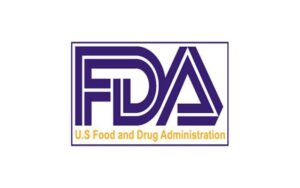
We are sometimes asked if AirMed meets FDA standards. First, please be aware that the FDA is a department of the US government. The specific portion of FDA regulations relevant to software such as AirMed is part CFR 21. As it is an American standard, Health Canada does not require CFR Part 21 compliance as part of the Cannabis Act Regulations. And while AirMed was designed for the Canadian cannabis industry and to comply with Health Canada regulations, AirMed does conform to CFR Part 21 with respect to electronic record keeping, audit trails, and electronic signatures.
Many agencies throughout the world are responsible for issuing and enforcing regulations that affect businesses. The regulations affecting software such as AirMed are typically those related to records management compliance. And while there are many regulatory agencies involved in records management, for the most part the regulations themselves are similar from country to country and agency to agency. The purpose of them, in general, is to ensure the security, confidentiality and authentication of electronic records.
The U.S. FDA regulates food, drugs, medical devices, biologics, animal feed and drugs, cosmetics and radiation-emitting products such as cell phones for the U.S.A. The FDA’s rules for manufacturing and distribution are designed to protect consumers and promote public health. In the U.S. Code of Federal Regulations (CFR), Title 21 deals with Food & Drugs. Until recently, the regulations in this title required paper records with handwritten signatures.
Back in 1997, part 11 of 21 CFR was enacted to cover the use of electronic records and electronic signatures. Commonly known as 21 CFR 11, this part defines the criteria “under which the agency considers electronic records, electronic signatures, and handwritten signatures executed to electronic records to be trustworthy, reliable, and generally equivalent to paper records and handwritten signatures executed on paper.”
Essentially, the concerns about using electronic records are that records may be lost in a system crash, the data may become corrupt or modifications may be made without proper authorization. In addition, since printed documents with hand-written signatures are recognized as legally binding on the signators, the agencies are looking for ways to make electronic records similarly binding on their owners. The regulations have been proposed to ensure that whenever an organization replaces printed documents with electronic data, there are checks and balances in place to ensure integrity of the electronic records so that they can be legally equivalent to printed records.
AirMed has a range of features that satisfy standards for security, authentication, validation and auditing as outlined in 21 CFR 11 and other regulations.
For more detailed information visit: Code of Federal Regulations (CFR) | FDA
For more information on how AirMed helps you meet compliance, visit our Compliance page or our Frequently Asked Questions page. If you’d like to discuss your specific needs, please give us a call at 1-877-313-2442 or use one of the contact forms to start the ball rolling.
Report: GS1 Trends 2023/2024

Selling any product, including cannabis, starts with a unique identification number from GS1. The GS1 (Global Standards 1) organization is a neutral, global collaboration platform that brings industry leaders, government, regulators, academia, and associations together to develop standards-based solutions to address the challenges of data exchange.
GS1—which has local Member Organisations in 116 countries, over two million user companies and 10 billion transactions every day—helps ensure that there is a common language of business across the globe. GS1 manages the Global Trade Item Number or GTIN, which identifies companies and their products and services using barcode data.
“Trend Research 2023-2024” is a report published recently by GS1 that discusses the top business trends in the world. Topics include data privacy, supply chain digitalisation, traceability and new technologies.
“A cornerstone of any digital transformation are the concepts that are core to the GS1 system: globally unique identification, a common data language, a commitment to interoperability and a firm belief that business value achieved through data sharing is amplified through the use of standards.”
For more information and to download the report visit:
https://www.gs1.org/resources/articles/trend-research-2023-2024-innovation-world-continuous-disruption
Exporting Cannabis to the EU
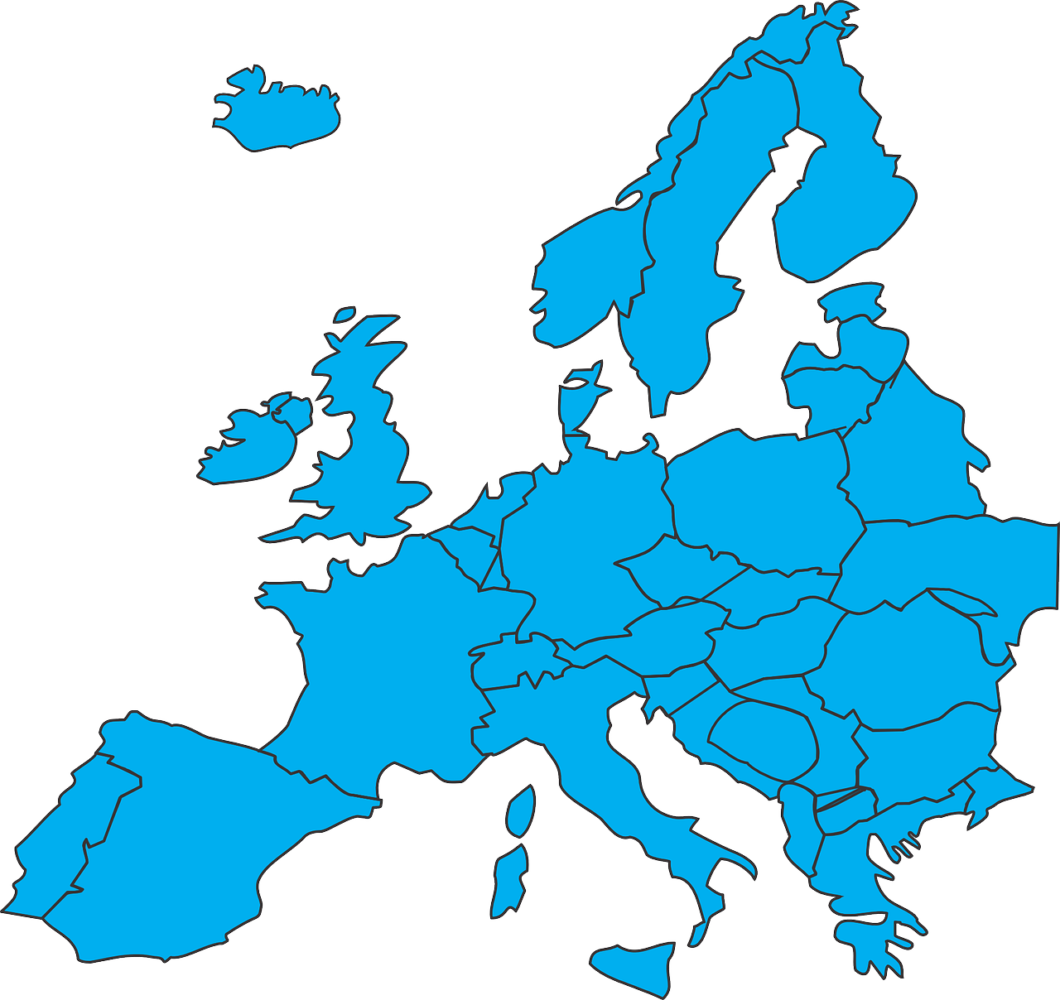
In a previous post, we discussed how some Canadian producers are selling excess inventory to export markets, including Europe.
In “The Europe Medical Cannabis Market,” Market Data Forecast reports, “The medical cannabis market in Europe is expected to grow from USD 4.96 billion in 2022 to USD 13.37 billion by 2027, growing at a CAGR [compound annual growth rate] of CAGR 21.96% from 2022 to 2027.”
Based on that report, Europe appears to be a significant marketplace for cannabis. But to sell into that market, the exporter must meet the region’s standards. In the case of Europe, those standards include the European Union’s Good Manufacturing Practices, referred to as EU GMP.
In their article, “A Look at Canadian Cannabis Exports,” published in 2021, The Business of Cannabis reported one reason why exports jumped in 2020. “In Canada, more cultivators gained the European Union’s Good Manufacturing Practices (EU GMP) certification, allowing them to export to that continent. More than a dozen Canadian LPs now have EU GMP certified facilities.”
Meeting EU GMP standards is critical for exporting into the European marketplace. But what is EU GMP and how does it differ from the standards Canadian companies already meet?
Health Canada requires that Canadian licensed producers comply with Good Production Practices or GPP standards. If you are a licensed producer in Canada, you are already familiar with GPP. If not, these standards are explained on the Health Canada website.
Essentially, GPP requires that cannabis businesses have appropriate procedures for all activities related to producing a product that is safe for public consumption. GPP mandates that systems be in place to ensure quality and traceability.
Good Manufacturing Practices, GMP, takes GPP further including requiring more stringent testing.
The Foundation of Cannabis Unified Standards (FOCUS) states, “GMP is the proactive part of quality assurance. It is designed to minimize the risks involved in all steps of the manufacturing process. A basic tenant of GMP is that quality cannot be tested into a product. It must be built into each batch of product during all stages of the manufacturing process.”
Originally designed for pharmaceutical products, GMP can be applied to any production process and is a requirement for those wishing to market medical cannabis in Europe.
The EU GMP standards are complex, and the information can be difficult to navigate, especially how it applies to cannabis.
But the Canadian government has published guidelines designed to help manufacturers meet GMP standards. Their guidance document has been written “with a view to harmonize with GMP standards from: the World Health Organization (WHO); the Pharmaceutical Inspection Cooperation/Scheme (PIC/S); the International Council on Harmonisation (ICH); the International Cooperation on Harmonisation of Technical Requirements for Registration of Veterinary Medicinal Products (VICH); other regulatory agencies in other countries.”
While the EU is not mentioned specifically, these Canadian standards are a good starting point for cannabis companies considering exporting into other markets. These guidelines will help producers understand what is required and can be used as a stepping stone toward EU GMP certification.
According to the media, the EU standards are stringent, and certification can be time-consuming and costly. But with a market as large as Europe, Canadian companies are in a position to benefit from the opportunities that an EU GMP certificate can offer.
To access the resources quoted here, use the following links:
- https://businessofcannabis.com/a-look-at-canadian-cannabis-exports/
- https://www.marketdataforecast.com/market-reports/europe-medical-cannabis-market
- https://www.focusstandards.org/gmp-cannabis-industry/
- https://www.gmp-compliance.org/guidelines/gmp-guidelines
- https://www.canada.ca/en/health-canada/services/drugs-health-products/compliance-enforcement/good-manufacturing-practices/guidance-documents/gmp-guidelines-0001/document.html
Can Canadian Producers Export Excess Supply?
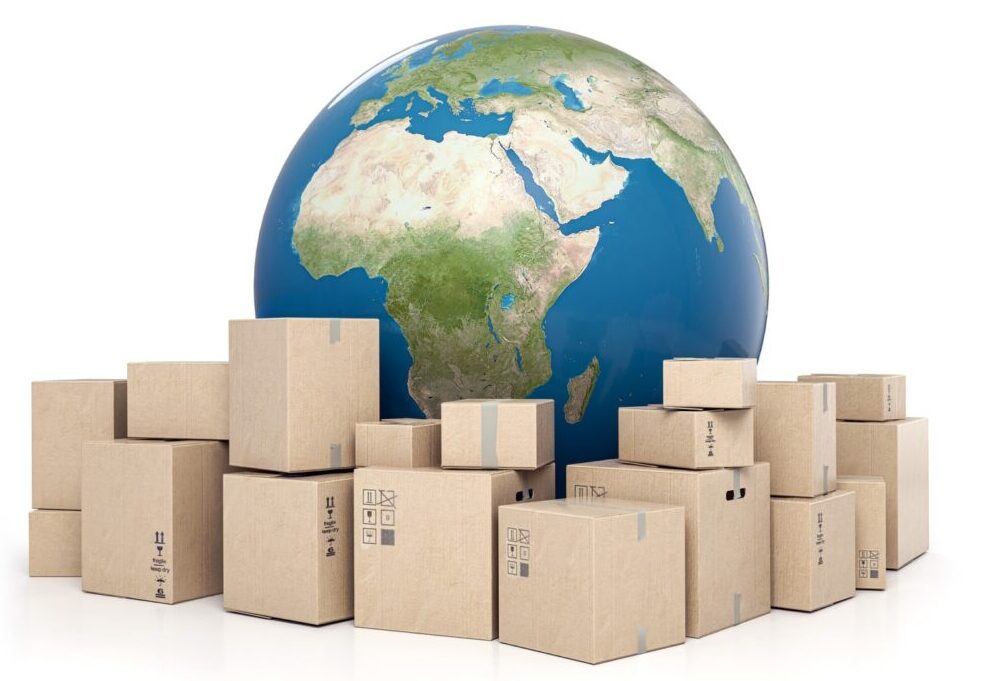
With media reporting oversupply challenges in the Canadian cannabis industry, can producers turn to export markets to sell their inventory? The answer might be yes. As countries around the world legalize cannabis, new opportunities are emerging for producers in Canada.
Canadian companies have been exporting cannabis for several years already. In fact, back in June 2020, MJBizDaily published a two-part article on Canada’s export of medical cannabis during 2019. Part 1 was titled, “Canada exported record amount of dried cannabis in 2019…” Part 2 reported, “Canadian exports of medical cannabis oil jumped fivefold in 2019.”
Canadian Regulatory Review reported in September of 2020 that the Canadian government had even become supportive of cannabis exports. “On the export side, and to further bolster trade, as of January 2020, the federal government through Canada’s Trade Commissioner Service extended trade commissioner services for Canadian cannabis companies exporting cannabis for medical and scientific purposes.”
A few months after that article, in April 2021, Prohibition Partners released a report called “Revealed: The Canadian Cannabis Export Market for 2020.” The report notes that the largest export markets for Canada at the time were Germany, Australia, Israel and the United Kingdom. “…new data shows a huge increase in the exports of cannabis from the country in 2020, as well as a changing network of countries that are importing from established producers in Canada.”
In May of that same year, Business of Cannabis took “A look at Canadian cannabis exports,” noting that “Dried cannabis flower and cannabis oil exports more than doubled in 2020, while imports dropped to virtually zero…”
An article titled, “How Canada’s Oversupply of Cannabis Is an Export Opportunity,” was published in October of 2022 by Canadian Cannabis Exchange. “As the demand for cannabis legalization increases internationally, Canada has the opportunity to become the world leader in cannabis exports… The European Union is proving to be a lucrative market for Canadian exports.”
To read the full articles quoted here, visit the following links:
- https://mjbizdaily.com/canada-exported-record-amount-of-dried-cannabis-in-2019/
- https://mjbizdaily.com/canadian-exports-of-medical-cannabis-oil-jumped-fivefold-in-2019/
- https://www.canadaregulatoryreview.com/international-trade-in-cannabis-international-and-domestic-regulatory-developments/
- https://prohibitionpartners.com/2021/04/30/revealed-the-canadian-cannabis-export-market-for-2020/
- https://businessofcannabis.com/a-look-at-canadian-cannabis-exports/
- https://canadiancannabisx.com/how-canadas-oversupply-of-cannabis-is-an-export-opportunity/
Software Validation for Cannabis Processors

One of the challenges for cannabis processers is that regulations require them to validate their extraction practices. In many cases, those practices involve the use of software. Therefore, any software used in relation to production must be validated along with the practices.
As tracking production reliability is an important part of meeting compliance, most tracking involves the use of software.
Software vendors are responsible for ensuring the software they sell works as described. But, validating that software is the responsibility of the processor. Why? Because every organization operates differently, and validation must be done in relation to actual production practices.
If you are using AirMed as your system-of-record, you will need to validate our software as it is used in your facility.
AirMed helps you through the validation process by providing test scripts that can be used to validate each task in the workflows that relate to extraction processes. These test scripts show what the software was designed to do, how the software should be used for that specific task and what the end result should be.
We can provide you with a validation report outlining how we meet software vendor compliance. Our validation report details how our software complies with security, privacy and accessibility requirements. AirMed software has been designed to not only meet compliance with Canada’s Cannabis Act but also to support and comply with Federal and Provincial privacy legislation and regulations (PIPEDA, PIPA, PHIPA, PHIA). AirMed also meets the standards outlined in the US FDA 21 CFR Part 11, which many other specifications are based on.
Our internal procedures have been through an external vendor audit for the pharmaceutical industry and passed with no observations.
If you’d like to learn more about good production practices for cannabis in Canada, the Government of Canada has published GPP guidance information here: https://www.canada.ca/en/health-canada/services/cannabis-regulations-licensed-producers/good-production-practices-guide/guidance-document.html
For more information on how AirMed helps you meet compliance, visit our Compliance page or our Frequently Asked Questions page. If you’d like to discuss your specific needs, please give us a call at 1-877-313-2442 or use one of the contact forms to start the ball rolling.
Support for GS-1 Barcoding Standards in AirMed

AirMed software offers full functionality for multi-level packaging with layered barcoding that meets GS-1 barcode standards. This is the standard required to sell to provincial government distributors.
Licensed producers who use AirMed can assemble retail-ready individual product packages using a ‘master case’ system and identify and track products at each packaging level.
AirMed software offers full SKU and barcode management that supports GS-1 barcoding standards. Pricing can be set at the package or master case SKU, and custom pricing can be set for specific SKUs by customer. The software offers features for creating and processing the orders as well as fulfilling and shipping them to provincial agencies.
Our master case processing lets you use layered barcoding for individual containers through to cases of multiple containers. The AirMed track-and-trace system allows retail packages to be traced to the lot or batch and ultimately back to the original genetic material. And AirMed has a comprehensive multi-step recall process that completely automates recalls if they are ever needed.
To schedule a live demonstration of AirMed Cloud software, call us at 1-877- 313-2442 or click the Request Demo button at the top of the screen.
For more information on how AirMed helps your business, visit our Software page or our Frequently Asked Questions page. If you’d like to discuss your specific needs, please give us a call at 1-877-313-2442 or use one of the contact forms to start the ball rolling.
Cannabis in Canada: Get the Facts
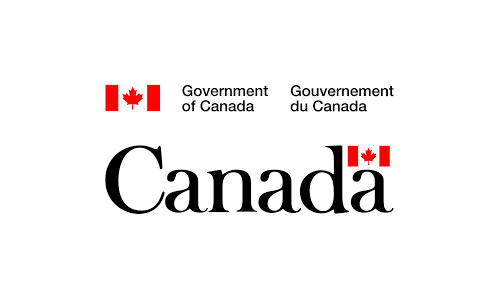
Do you have questions about cannabis in Canada? Would you like to understand the laws that govern the Canadian cannabis industry? Are you considering applying for a license to cultivate, process or sell cannabis?
The federal government has a webpage that outlines what industry needs to know about cannabis in Canada. This information covers the basics related to doing business in the cannabis industry including:
Impact of the new law and regulations on industry
- Applying for or amending a federal licence
- Packaging and labelling requirements
- Cannabis Tracking and Licensing System requirements
- Compliance and enforcement under the Cannabis Act
- Prohibitions on promotions
- and more
The page provides links to relevant sections of the federal government website where you can find more information on each topic.
https://www.canada.ca/en/services/health/campaigns/cannabis/industry.html
For more information on how AirMed helps you meet compliance, visit our Compliance page or our Frequently Asked Questions page. If you’d like to discuss your specific needs, please give us a call at 1-877-313-2442 or use one of the contact forms to start the ball rolling.
Reporting & Auditing in AirMed
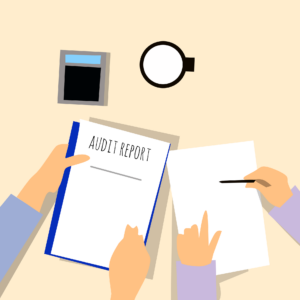
AirMed software is specifically designed to meet or exceed Cannabis Act regulations with full audit support capabilities and comprehensive reporting. AirMed regularly passes Health Canada inspections. For more information visit our Compliance page.
AirMed is designed to support and comply with federal, provincial and local legislation. In fact, AirMed meets the USA’s FDA 21 CFR Part 11 regulations. Considered to be some of the most comprehensive electronic record keeping specifications in the world, they are the basis for the standards set by many countries.
AirMed pulls all the required information for all government reporting, whether monthly, quarterly, or annually. Reports are built in for Cannabis Licensing & Tracking System (CTLS) and Canada Revenue Agency (CRA). Supporting sub-reports provide the necessary validation detail. Export data to other systems or print reports to retain the required information outside of AirMed as archived printed or electronic records.
Every action/workflow in AirMed is auditable, and built-in audit reports & forms provide complete product traceability. Inventory, recall, destruction and other reports can be generated as needed. Authorized site auditors can be given access to perform inspections of records. AirMed retains all data indefinitely and lets you export or print reports to be held for required retention periods for audit purposes.
For more information about AirMed’s reporting and auditing features, schedule a free demo by clicking the Request Demo button at the top of the page or by using the contact form in the footer. You can also call us directly at 1-877-313-2442.


